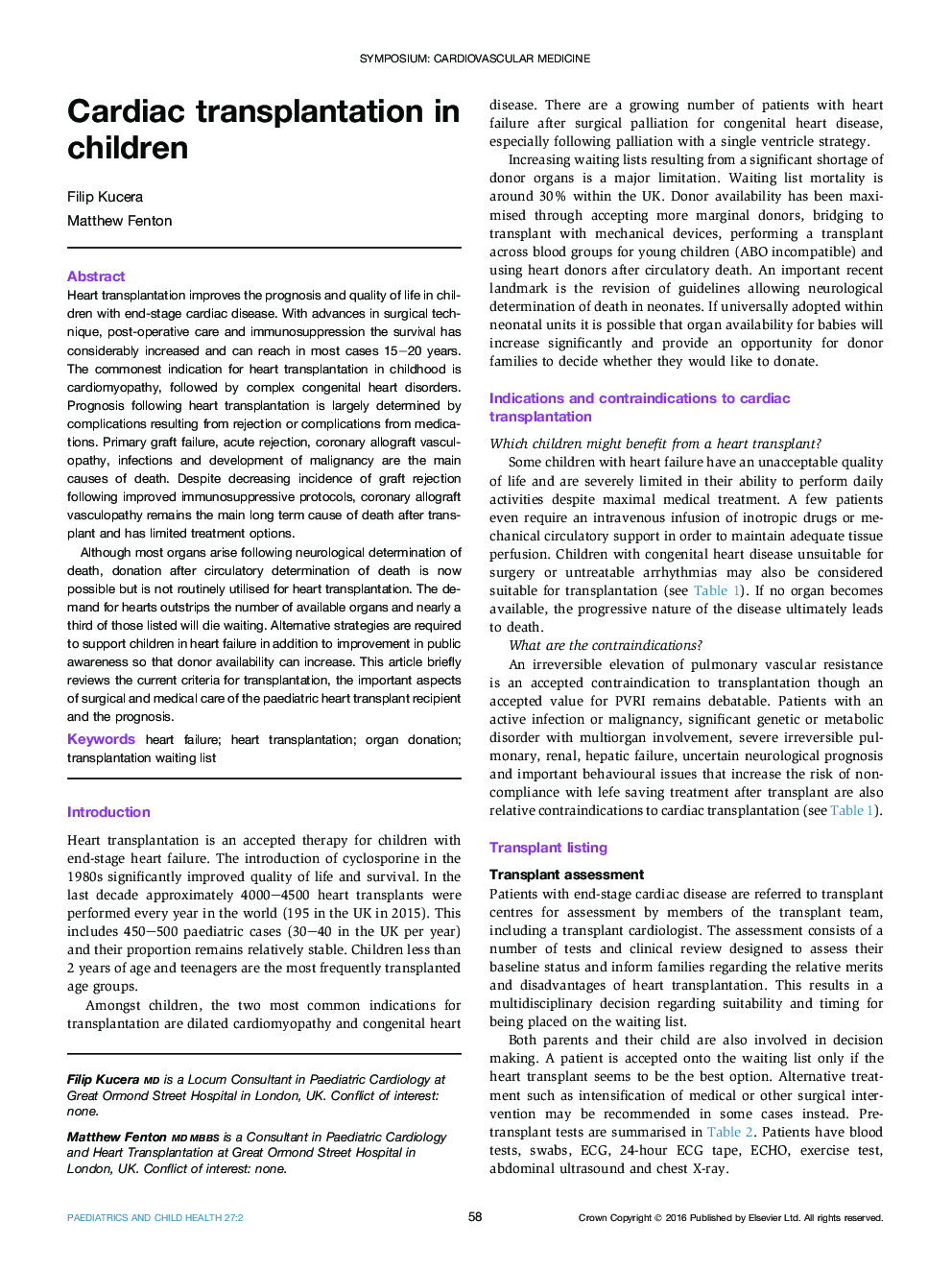| Article ID | Journal | Published Year | Pages | File Type |
|---|---|---|---|---|
| 5720017 | Paediatrics and Child Health | 2017 | 6 Pages |
Heart transplantation improves the prognosis and quality of life in children with end-stage cardiac disease. With advances in surgical technique, post-operative care and immunosuppression the survival has considerably increased and can reach in most cases 15-20 years. The commonest indication for heart transplantation in childhood is cardiomyopathy, followed by complex congenital heart disorders. Prognosis following heart transplantation is largely determined by complications resulting from rejection or complications from medications. Primary graft failure, acute rejection, coronary allograft vasculopathy, infections and development of malignancy are the main causes of death. Despite decreasing incidence of graft rejection following improved immunosuppressive protocols, coronary allograft vasculopathy remains the main long term cause of death after transplant and has limited treatment options.Although most organs arise following neurological determination of death, donation after circulatory determination of death is now possible but is not routinely utilised for heart transplantation. The demand for hearts outstrips the number of available organs and nearly a third of those listed will die waiting. Alternative strategies are required to support children in heart failure in addition to improvement in public awareness so that donor availability can increase. This article briefly reviews the current criteria for transplantation, the important aspects of surgical and medical care of the paediatric heart transplant recipient and the prognosis.
